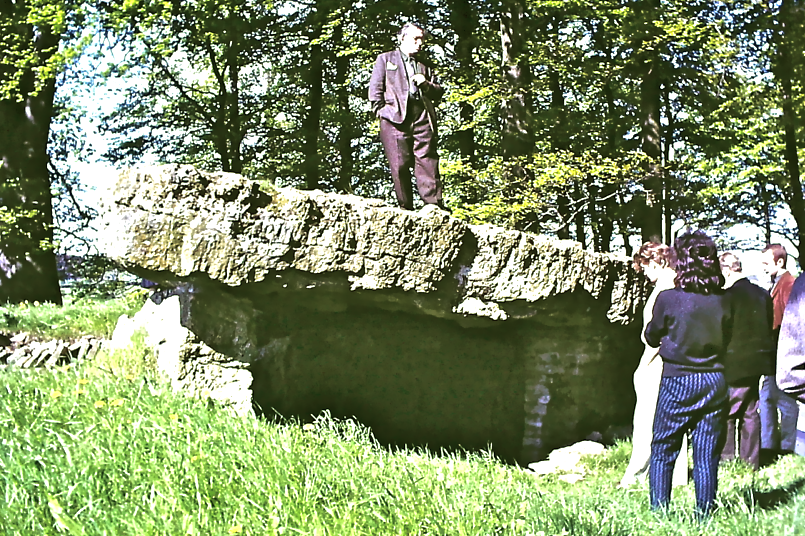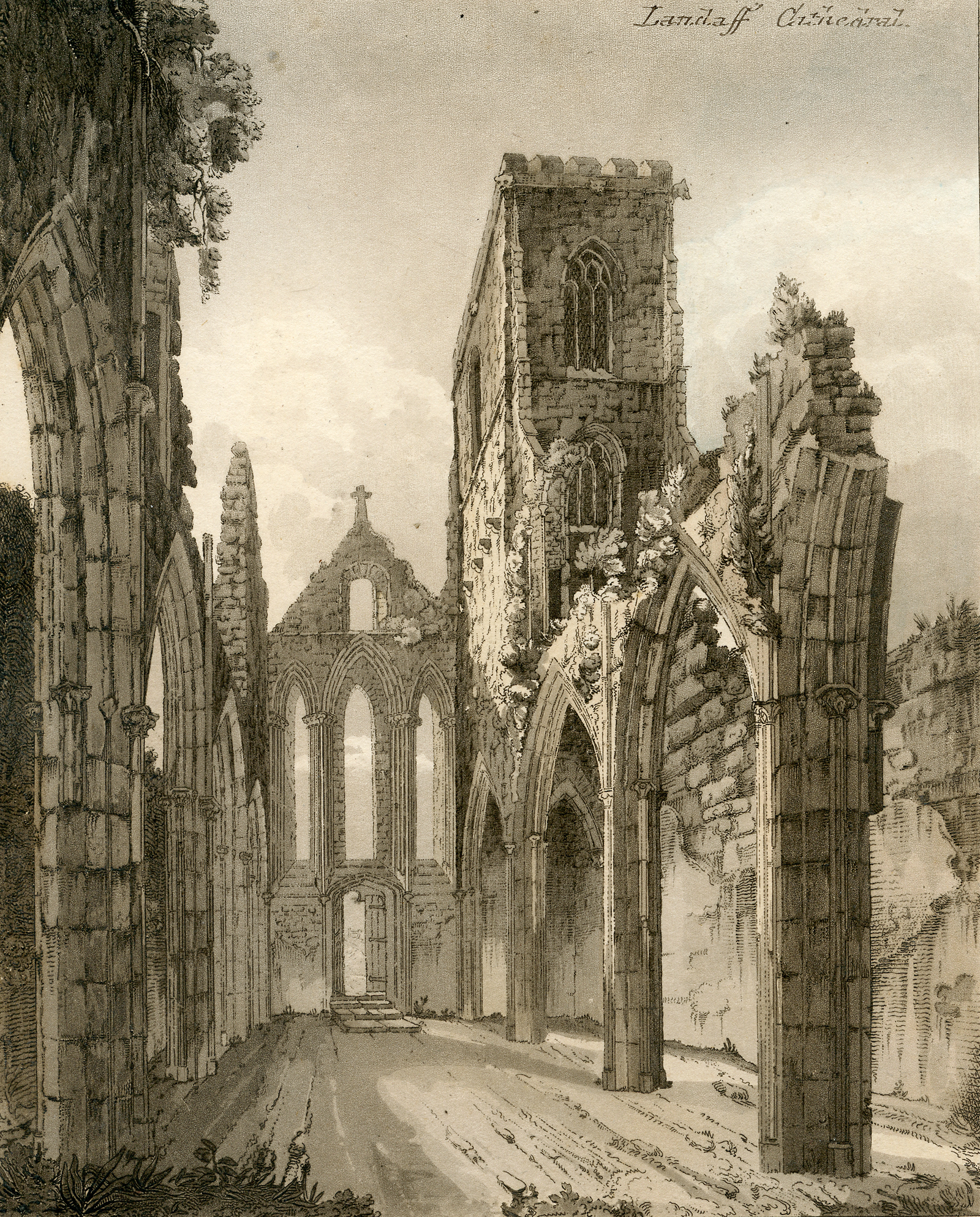|
Glyn Edmund Daniel
Glyn Edmund Daniel FBA, FRAI (23 April 1914 – 13 December 1986) was a Welsh scientist and archaeologist who taught at Cambridge University, where he specialised in the European Neolithic period. He was appointed Disney Professor of Archaeology in 1974 and edited the academic journal '' Antiquity'' from 1958 to 1985. In addition to early efforts to popularise archaeological study and antiquity on radio and television, he edited several popular studies of the fields. He also published mysteries under the pseudonym Dilwyn Rees. Early life and education Daniel was born in Lampeter Velfrey, Pembrokeshire, a small village between Narberth and Whitland in south-west Wales, as an only child. His father, John Daniel, was the village schoolmaster there. When Glyn Daniel was five he moved with his parents to Llantwit Major in the Vale of Glamorgan. He attended Barry County School for Boys in Barry, where his academic ability led to him being awarded a State Scholarship (which en ... [...More Info...] [...Related Items...] OR: [Wikipedia] [Google] [Baidu] |
Disney Professor Of Archaeology
The Disney Professorship of Archaeology is an endowed chair in archaeology at the University of Cambridge. It was endowed by John Disney in 1851 with a donation of £1,000, followed by a further £2,500 bequest upon his death in 1857. Disney Professors have also served as the Directors of the McDonald Institute for Archaeological Research since it was founded in 1990. List of Disney Professors of Archaeology * 1851–1865 John Howard Marsden * 1865–1879 Churchill Babington * 1879–1887 Percy Gardner * 1887–1892 George Forrest Browne * 1892–1926 William Ridgeway * 1926–1938 Ellis Minns * 1939–1952 Dorothy Garrod * 1952–1974 Grahame Clark Sir John Grahame Douglas Clark (28 July 1907 – 12 September 1995), who often published as J. G. D. Clark, was a British archaeologist who specialised in the study of Mesolithic Europe and palaeoeconomics. He spent most of his career working at ... * 1974–1981 Glyn Daniel * 1981–2004 Colin Renfrew * 2004–2014 Graeme Bar ... [...More Info...] [...Related Items...] OR: [Wikipedia] [Google] [Baidu] |
Anthropology
Anthropology is the scientific study of humanity, concerned with human behavior, human biology, cultures, societies, and linguistics, in both the present and past, including past human species. Social anthropology studies patterns of behavior, while cultural anthropology studies cultural meaning, including norms and values. A portmanteau term sociocultural anthropology is commonly used today. Linguistic anthropology studies how language influences social life. Biological or physical anthropology studies the biological development of humans. Archaeological anthropology, often termed as 'anthropology of the past', studies human activity through investigation of physical evidence. It is considered a branch of anthropology in North America and Asia, while in Europe archaeology is viewed as a discipline in its own right or grouped under other related disciplines, such as history and palaeontology. Etymology The abstract noun ''anthropology'' is first attested in reference t ... [...More Info...] [...Related Items...] OR: [Wikipedia] [Google] [Baidu] |
Archaeology
Archaeology or archeology is the scientific study of human activity through the recovery and analysis of material culture. The archaeological record consists of artifacts, architecture, biofacts or ecofacts, sites, and cultural landscapes. Archaeology can be considered both a social science and a branch of the humanities. It is usually considered an independent academic discipline, but may also be classified as part of anthropology (in North America – the four-field approach), history or geography. Archaeologists study human prehistory and history, from the development of the first stone tools at Lomekwi in East Africa 3.3 million years ago up until recent decades. Archaeology is distinct from palaeontology, which is the study of fossil remains. Archaeology is particularly important for learning about prehistoric societies, for which, by definition, there are no written records. Prehistory includes over 99% of the human past, from the Paleolithic until the adven ... [...More Info...] [...Related Items...] OR: [Wikipedia] [Google] [Baidu] |
Geography
Geography (from Greek: , ''geographia''. Combination of Greek words ‘Geo’ (The Earth) and ‘Graphien’ (to describe), literally "earth description") is a field of science devoted to the study of the lands, features, inhabitants, and phenomena of Earth. The first recorded use of the word γεωγραφία was as a title of a book by Greek scholar Eratosthenes (276–194 BC). Geography is an all-encompassing discipline that seeks an understanding of Earth and its human and natural complexities—not merely where objects are, but also how they have changed and come to be. While geography is specific to Earth, many concepts can be applied more broadly to other celestial bodies in the field of planetary science. One such concept, the first law of geography, proposed by Waldo Tobler, is "everything is related to everything else, but near things are more related than distant things." Geography has been called "the world discipline" and "the bridge between the human and ... [...More Info...] [...Related Items...] OR: [Wikipedia] [Google] [Baidu] |
Llandaff Cathedral
Llandaff Cathedral ( cy, Eglwys Gadeiriol Llandaf) is an Anglican cathedral and parish church in Llandaff, Cardiff, Wales. It is the seat of the Bishop of Llandaff, head of the Church in Wales Diocese of Llandaff. It is dedicated to Saint Peter and Saint Paul, and three Welsh saints: Dubricius ( cy, Dyfrig), Teilo and Oudoceus ( cy, Euddogwy). It is one of two cathedrals in Cardiff, the other being the Roman Catholic Cardiff Metropolitan Cathedral in the city centre. The current building was constructed in the 12th century on the site of an earlier church. Severe damage was done to the church in 1400 during the rebellion of Owain Glyndŵr, during the English Civil War when it was overrun by Parliamentarian troops, and during the Great Storm of 1703. By 1717, the damage to the cathedral was so extensive that the church seriously considered the removal of the see. Following further storms in the early 1720s, construction of a new cathedral began in 1734, designed by John Wood, t ... [...More Info...] [...Related Items...] OR: [Wikipedia] [Google] [Baidu] |
Geology
Geology () is a branch of natural science concerned with Earth and other astronomical objects, the features or rocks of which it is composed, and the processes by which they change over time. Modern geology significantly overlaps all other Earth sciences, including hydrology, and so is treated as one major aspect of integrated Earth system science and planetary science. Geology describes the structure of the Earth on and beneath its surface, and the processes that have shaped that structure. It also provides tools to determine the relative and absolute ages of rocks found in a given location, and also to describe the histories of those rocks. By combining these tools, geologists are able to chronicle the geological history of the Earth as a whole, and also to demonstrate the age of the Earth. Geology provides the primary evidence for plate tectonics, the evolutionary history of life, and the Earth's past climates. Geologists broadly study the properties and processes of E ... [...More Info...] [...Related Items...] OR: [Wikipedia] [Google] [Baidu] |
University Of Cambridge
, mottoeng = Literal: From here, light and sacred draughts. Non literal: From this place, we gain enlightenment and precious knowledge. , established = , other_name = The Chancellor, Masters and Scholars of the University of Cambridge , type = Public research university , endowment = £7.121 billion (including colleges) , budget = £2.308 billion (excluding colleges) , chancellor = The Lord Sainsbury of Turville , vice_chancellor = Anthony Freeling , students = 24,450 (2020) , undergrad = 12,850 (2020) , postgrad = 11,600 (2020) , city = Cambridge , country = England , campus_type = , sporting_affiliations = The Sporting Blue , colours = Cambridge Blue , website = , logo = University of Cambridge logo ... [...More Info...] [...Related Items...] OR: [Wikipedia] [Google] [Baidu] |
Barry, Vale Of Glamorgan
Barry ( cy, Y Barri; ) is a town in the Vale of Glamorgan, Wales, on the north coast of the Bristol Channel approximately south-southwest of Cardiff. Barry is a seaside resort, with attractions including several beaches and the resurrected Barry Island Pleasure Park. According to Office for National Statistics 2016 estimate data, the population of Barry was 54,673. Once a small village, Barry has absorbed its larger neighbouring villages of Cadoxton and Barry Island, and now, Sully. It grew significantly from the 1880s with the development of Barry Docks, which in 1913 was the largest coal port in the world. Etymology The origin of the town's name is disputed. It may derive from the sixth-century Saint Baruc who was buried on Barry Island where a ruined chapel was dedicated to him. Alternatively, the name may derive from Welsh ', meaning "hill, summit". The name in Welsh includes the definite article. History Early history The area now occupied by Barry has seen human ac ... [...More Info...] [...Related Items...] OR: [Wikipedia] [Google] [Baidu] |
Vale Of Glamorgan
The Vale of Glamorgan ( cy, Bro Morgannwg ), often referred to as The Vale, is a county borough in the south-east of Wales. It borders Bridgend County Borough to the west, Cardiff to the east, Rhondda Cynon Taf to the north, and the Bristol Channel to the south. With an economy based largely on agriculture and chemicals, it is the southernmost unitary authority in Wales. Attractions include Barry Island Pleasure Park, the Barry Tourist Railway, Medieval wall paintings in St Cadoc's Church, Llancarfan, Porthkerry Park, St Donat's Castle, Cosmeston Lakes Country Park and Cosmeston Medieval Village. The largest town is Barry. Other towns include Penarth, Llantwit Major, and Cowbridge. There are many villages in the county borough. History The area is the southernmost part of the county of Glamorgan. Between the 11th century and 1536 the area was part of the Lordship of Glamorgan. In medieval times, the village of Cosmeston, near what is today Penarth in the south east of t ... [...More Info...] [...Related Items...] OR: [Wikipedia] [Google] [Baidu] |
Llantwit Major
Llantwit Major ( cy, Llanilltud Fawr) is a town and community in Wales on the Bristol Channel coast. It is one of four towns in the Vale of Glamorgan, with the third largest population (13,366 in 2001) after Barry and Penarth, and ahead of Cowbridge. It is from Cowbridge, from Bridgend, from Barry, and from Cardiff. It had a population of 9,486 in 2011. ''Llanilltud Fawr'', named for the Llan of Saint Illtud, was home to the Monastery of Illtud and the college known as Bangor Illtyd. It became one of the most esteemed centres of Christian culture in the Celtic world. At its peak it had over 2000 students, including princes, eminent clergymen, and revered saints. The institutions were destroyed by the raiding Vikings in 987, but Norman rebuilt the monastery in 1111 and it continued to be a centre of learning until it was disbanded in 1539 during the Dissolution of the Monasteries. The 13th-century St Illtyd's Church, near the ancient monastery, is a Grade I listed building ... [...More Info...] [...Related Items...] OR: [Wikipedia] [Google] [Baidu] |
Whitland
Whitland (Welsh: , lit. "Old White House", or ''Hendy-gwyn ar Daf'', "Old White House on the River Tâf", from the medieval ''Ty Gwyn ar Daf'') is both a town and a community in Carmarthenshire, Wales. Description The Whitland community is bordered by the communities of: Henllanfallteg; Llanboidy; and Eglwyscummin, all being in Carmarthenshire; and by Lampeter Velfrey and Llanddewi Velfrey in Pembrokeshire. According to the 2011 census the population was 1,792. Despite losing its dairy and remaining high street bank, Whitland has an estimated 125 small businesses as well as Whitland Engineering, which services the dairy industry and in 2019 employed 90 people. History Traditionally, Whitland is seen as the site of an assembly of lawyers and churchmen, sometimes described as the first Welsh parliament, called in 930 by King Hywel Dda to codify the native Welsh laws. Whitland takes its name from its medieval Cistercian abbey. The monastery pre-dates Tintern but now is very ... [...More Info...] [...Related Items...] OR: [Wikipedia] [Google] [Baidu] |


.jpg)






